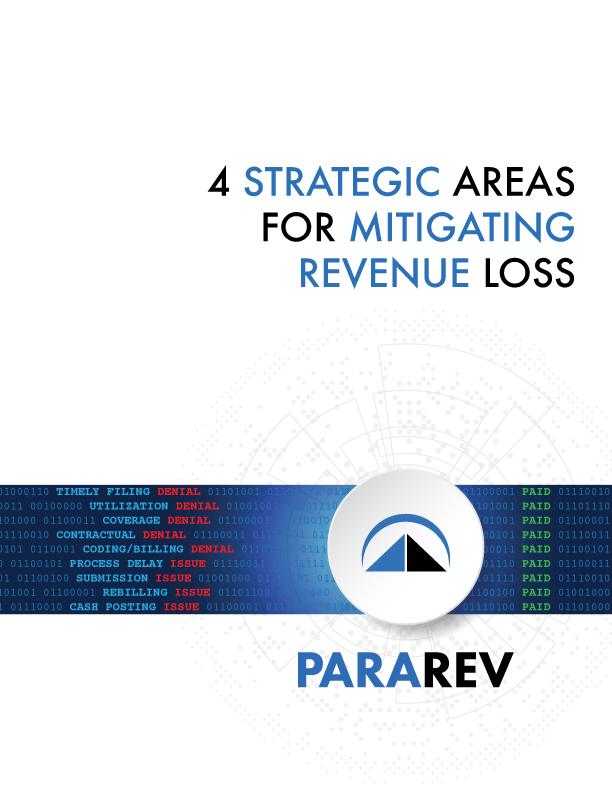A health insurance company as prominent as Blue Cross Blue Shield (BCBS), having over 62 million members across all 50 states, provides high potential for revenue generating opportunities for any hospital Central Billing Office (CBO). According to the 2020 census, there are 12.8 million people living in the state of Illinois with 80 percent of that population enrolled with BCBS of Illinois. Based on these statistics, that would suggest that 10.2 million residents in Illinois are enrolled for healthcare coverage through BCBS. In terms of a business perspective on a revenue standpoint, BCBS of Illinois coverage should always be a high focus for any facility solely for the revenue aspect when patients are seen.
Tip 1: Understanding your EDI clearinghouse
All hospitals throughout Illinois should have an intimate understanding of what is required from front-end registration to denial management to streamline revenue as best as possible for this large number of insured individuals with one carrier. BCBS of Illinois requires the use of an insurance web portal or clearinghouse, so it is important to understand the range of products that portal provides. This will help maximize efficiency and avoid unnecessary denials to keep aging clean and healthy for this large volume carrier.
Tip 2: Checking eligibility – the key to clean claims
On a front-end/registration point of view, utilizing running eligibility is a simple starting point to ensure your claims are being sent to the appropriate address. Whether a patient’s coverage is through an Independent Practice Association (IPA), Managed Care Organization (MCO), Labor Fund, Federal or traditional BCBS, checking eligibility is the first step to avoid any unnecessary submissions or claim status inquiry attempts.
Tip 3: Utilizing AIM to help decrease denials
After eligibility is confirmed and the patient’s benefits based on the services have been provided, utilizing the AIM portal within the insurance web portal is another excellent tool for preauthorization purposes. The AIM portal allows you to look up the services a patient is scheduled to receive and verify if that specific CPT® code requires a preauthorization. As a vendor, the most common denials we see with our hospitals are specifically from the clinical denial aspect. This denial category would pertain to no authorization, medical necessity, level of care, and length of stay. With utilizing the AIM portal, this will provide an opportunity to minimize no authorization denials with a simple check if the scheduled services require an authorization or not. If your facility is not aware of this, please reach out to your provider representative to provide you this information. On a medical necessity standpoint, you may also utilize the AIM portal to initiate a peer-to-peer review for level of care or length of stay denials in efforts to overturn these denials received.
Tip 4: Improving follow-up efficiency and accuracy
Follow-up efficiency and accuracy is also important when dealing with this high-volume carrier. With roughly 10.2 million members, traditional BCBS of Illinois receives enormous amounts of calls a day regarding claim status inquires. Using an insurance web portal’s claim status tool for all claim status inquires prior to calling can help reduce unnecessary calls. This tool provides the opportunity to capture all key and necessary information needed to grasp a rough understanding of all claim status inquires. There may be times that the information captured may not be sufficient in terms of a progressive standpoint to verify if recent submitted disputes or documents are under review. Utilizing the CIR, or Claim Inquiry Resolution tool, is another effective way to verify an updated status of documents or disputes submitted, which is provided with a reference number for tracking purposes to ensure all inquiries are answered in a timely manner. Utilizing this tool helps reduce call volumes along with decreased hold times. Not only will this tool assist the efficiency of any CBO staff member but will also help vendors as well.
Tip 5: Understanding contractual reimbursement agreements
Some believe that BCBS pays at 100% of billed charges when in fact that is not the case. Typically, what happens is that it appears payments are paid in full within an Electronic Medical Records (EMR) system but in reality, the contractual adjustment is applied on the back end through the UPP Program. The Uniform Payment Program (UPP) in a sense is the contractual reimbursement solely for BCBS and individual facilities. The UPP discount can range from 25 percent to 70 percent based on services provided or the facility in general. It is encouraged to speak to your provider representative or your internal contract management department if you do not have a clear understanding of the discount BCBS of Illinois has with your facility.
Streamlining BCBS accounts
In conclusion, BCBS of Illinois provides countless opportunities to streamline this book of business with your CBOs and your vendors to help improve efficiencies which in turn will increase your revenue. Accurately utilizing all tools that BCBS and an insurance web portal provide is another opportunity to decrease denial volumes thus reduce aging. Any specific questions you may have, it is highly encouraged to reach out to your provider representative that will allow you to make your CBO and vendors more successful.
ParaRev can help
ParaRev has the expertise in working with BCBS not only in Illinois but across the country.
Our experts have a thorough knowledge of each state’s requirements and can help you with comprehensive revenue cycle services to support accurate coding, clean claims, and timely and appropriate reimbursement. Contact us today to learn more about the many ways we can help your organization.

Download our free whitepaper that discusses four key areas hospitals can address right now to mitigate or reverse revenue losses during the pandemic.
Related Posts
None found
